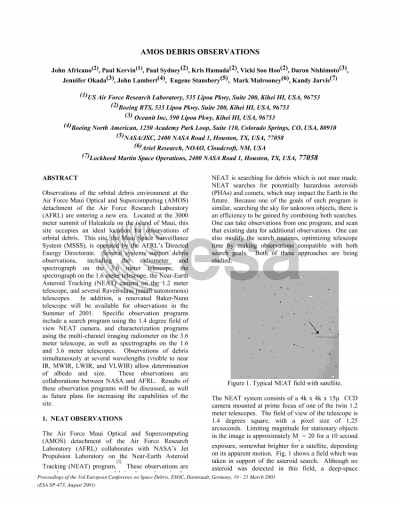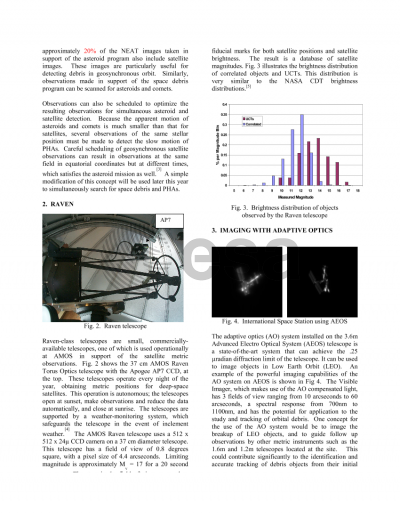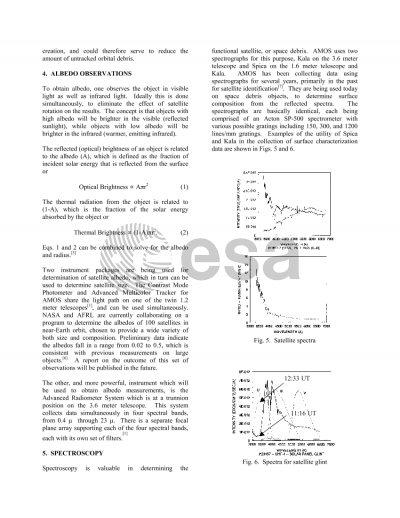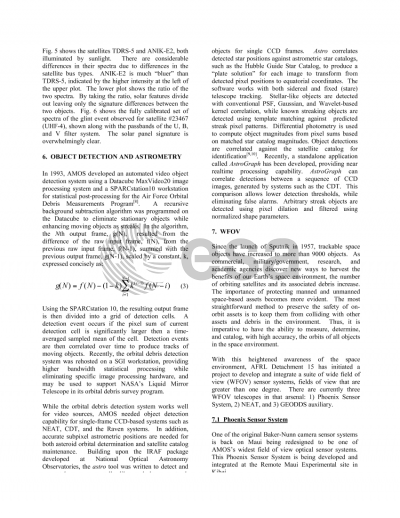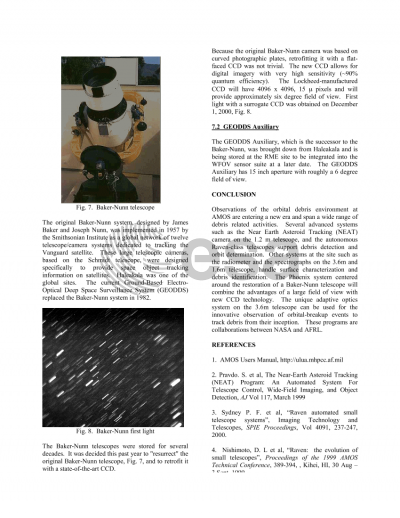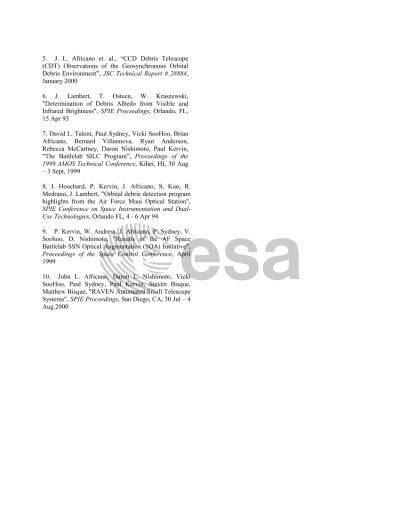Document details

Abstract
Observations of the orbital debris environment at the Air Force Maui Optical and Supercomputing (AMOS) detachment of the Air Force Research Laboratory (AFRL) are entering a new era. Located at the 3000 meter summit of Haleakala on the island of Maui, this site occupies an ideal location for observations of orbital debris. This site, the Maui Space Surveillance System (MSSS), is operated by the AFRL's Directed Energy Directorate. Several systems support debris observations, including the radiometer and spectrograph on the 3.6 meter telescope, the spectrograph on the 1.6 meter telescope, the Near-Earth Asteroid Tracking (NEAT) camera on the 1.2 meter telescope, and several Raven-class (small autonomous) telescopes. In addition, a renovated Baker-Nunn telescope will be available for observations in the Summer of 2001. Specific observation programs include a search program using the 1.4 degree field of view NEAT camera, and characterization programs using the multi-channel imaging radiometer on the 3.6 meter telescope, as well as spectrographs on the 1.6 and 3.6 meter telescopes. Observations of debris simultaneously at several wavelengths (visible to near IR, MWIR, LWIR, and VLWIR) allow determination of albedo and size. These observations are collaborations between NASA and AFRL. Results of these observation programs will be discussed, as well as future plans for increasing the capabilities of the site.
Preview
